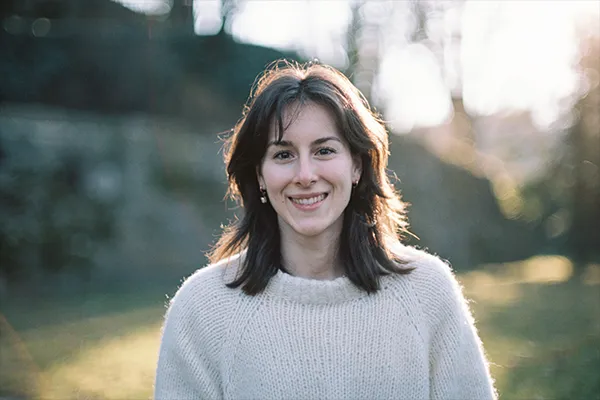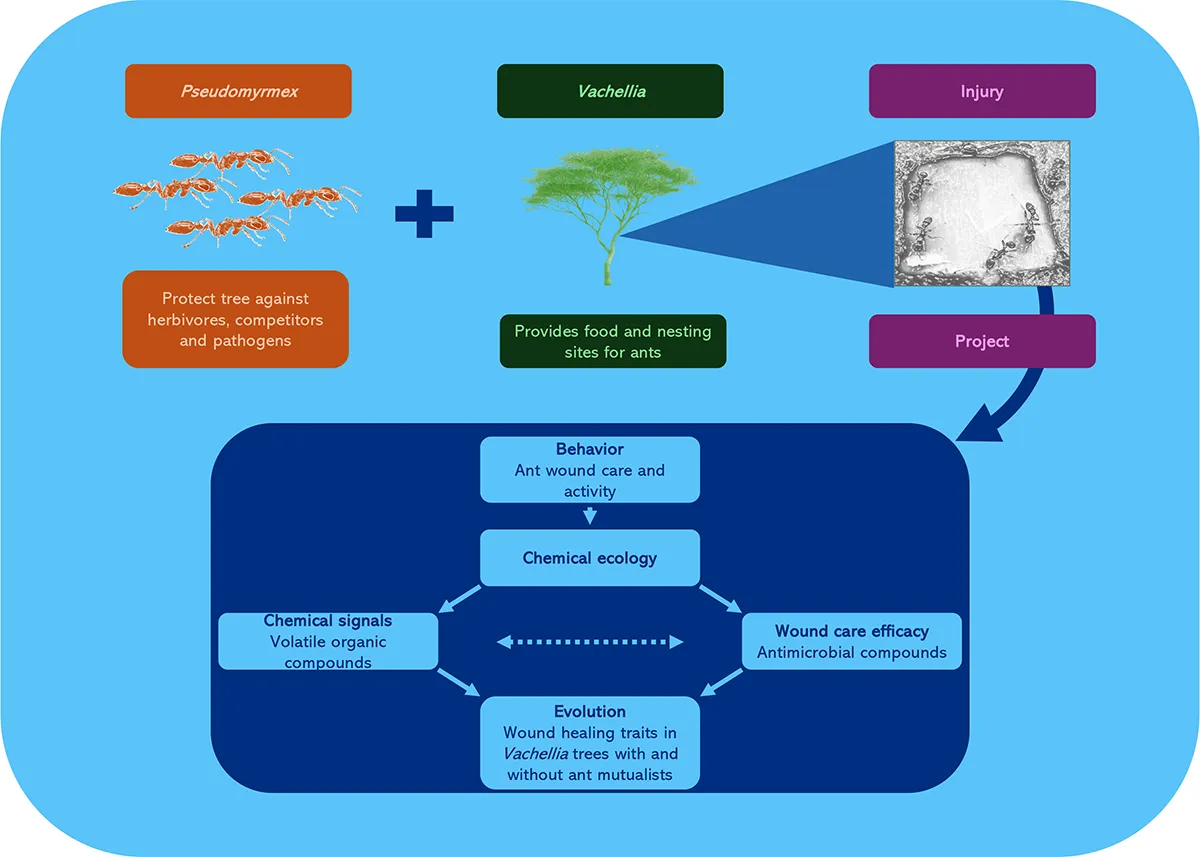Inter-kingdom wound care between ants and plants
Melina Kienitz — Hector RCD Awardee Erik T. Frank
My project investigates the mutualism between Vachellia trees and Pseudomyrmex ants, focusing on their role in wound care. Using chemical ecology, proteomics, microbiology, and behavioral experiments, I plan to identify relevant wound healing compounds as well as the evolutionary mechanisms that enabled inter-kingdom wound care. This research expands on our concept of the social immune system by expanding it towards the ants’ host in this unique relationship.
Mutualistic ant-plant relationships are vital for biodiversity and ecosystem stability. Through coevolution, plants provide shelter and food, while ants defend them from herbivores and pathogens. As stationary organisms, plants are vulnerable to injuries that trigger defensive responses, including interactions with ants. While some ants exhibit wound care within their colonies, their role in tending plant wounds remains unclear. This project hypothesizes that mutualistic ants actively care for plant wounds, especially in obligate relationships where plant survival directly affects ant fitness. Preliminary results show ants interacting with plant wounds, suggesting a role in interkingdom wound care. By the end of this study, we aim to deliver the first detailed description of this phenomenon. Using a multidisciplinary approach – combining chemical ecology, proteomics, microbiology, and behavioral analyses – we will identify the proteins and compounds involved in wound healing and explore how myrmecophyte plants co-evolved with ants to optimize wound care. These findings may reveal novel plant defense strategies, redefine the concept of social immunity, and reshape our understanding of mutualistic relationships.
Top: Illustration of the mutualism between Vachellia trees and Pseudomyrmex ants, with a particular focus on the wound care provided by the ants. Right: The project outline presents the multidisciplinary methods we use to study this interaction – ranging from behavioral observations to chemical analyses.

Melina Kienitz
University of WürzburgSupervised by

Erik T. Frank
Biology & Chemistry

